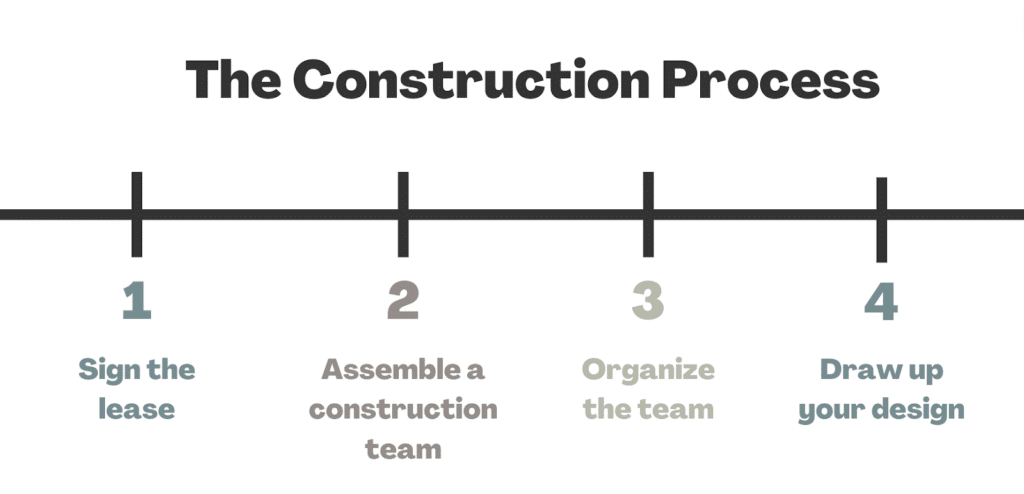

This summer, high school intern Siena Becchetti attended a series of construction meetings for Northwest Area Foundation, in which she learned the many steps involved in the construction process–just one essential part of the commercial real estate process.
Through the perspective of an intern, the process can be summarized in these eight steps:
- Sign the lease. You can’t start the project until you’ve signed a lease with the landlord.
- Assemble a construction team. A construction project involves a large number of experienced, licensed and qualified people, all with their own part. Your construction team can consist of a general contractor, an architect, a project manager, an interior designer, and subcontractors such as plumbers, furniture vendors, electrical engineers, and HVAC (heating, ventilation, and air conditioning), AV (audio visual), and LV (low voltage) engineers.
- Organize the team. Everybody needs to work together in order to build a space that can become a productive work environment. This can’t be done without regular construction meetings to discuss your plans, and make sure that everyone is coordinated with each other.
- Draw up the design. To ensure a safe and efficient layout of the space, the architect must draw the new design and prepare for demolition if necessary.
- Price everything out. It’s not only rent and common area maintenance that a company is paying, but it also needs to budget for the costs of construction, new furniture, artwork, securit, and other fees.
-
Value engineering. With the current escalating cost of construction, the prices of construction do not always align with a company’s budget. Value engineering is becoming a very important part of the process. Value engineering is a systematic, organized approach to providing necessary functions in a project at the lowest cost and it can be especially helpful to work with an experienced general contractor who is skilled in making such VE recommendations while still respecting the design intent of the architect.Rawan AlGahtani, student at the University of Minnesota attended a value engineering session. She made several observations:
- Everyone is an active participant. Being comfortable with their area of expertise allows the process to be as efficient and effective as the group went through in detail cost saving alternatives.
- Preparation is key to success. Individuals who come to the meeting prepared are more engaged and knowledgeable about their estimates which is helpful for accurate pricing. Meanwhile, if the opposite occurs, costly delays impact the progress of the project.
- Strong facilitation. Time is valuable in commercial real estate. The owners rep, in this case Global Street Partners, helped facilitate the session effectively to ensure maximum preparation, engagement and productivity from the team. The budget and timeliness are always on the forefront of everyone’s mind.
- Construction Commencement. Depending on the size of the project, this step can take months and even years. You need to anticipate change orders and plan and budget for those accordingly.
- Celebrate Your Grand Opening! Completing the work on time is crucial without incurring cost for delays. Once the building’s construction is complete and occupancy is permitted, the occupants can move back to their offices. It is important to celebrate successes of the hard work of many.

